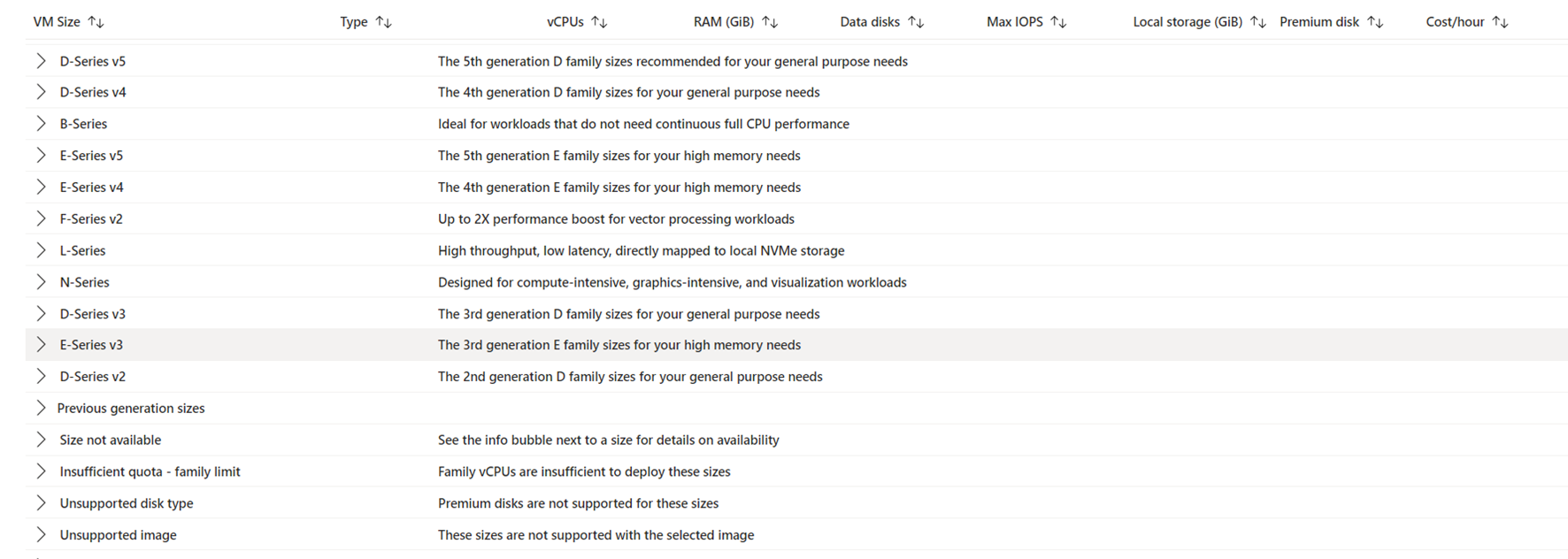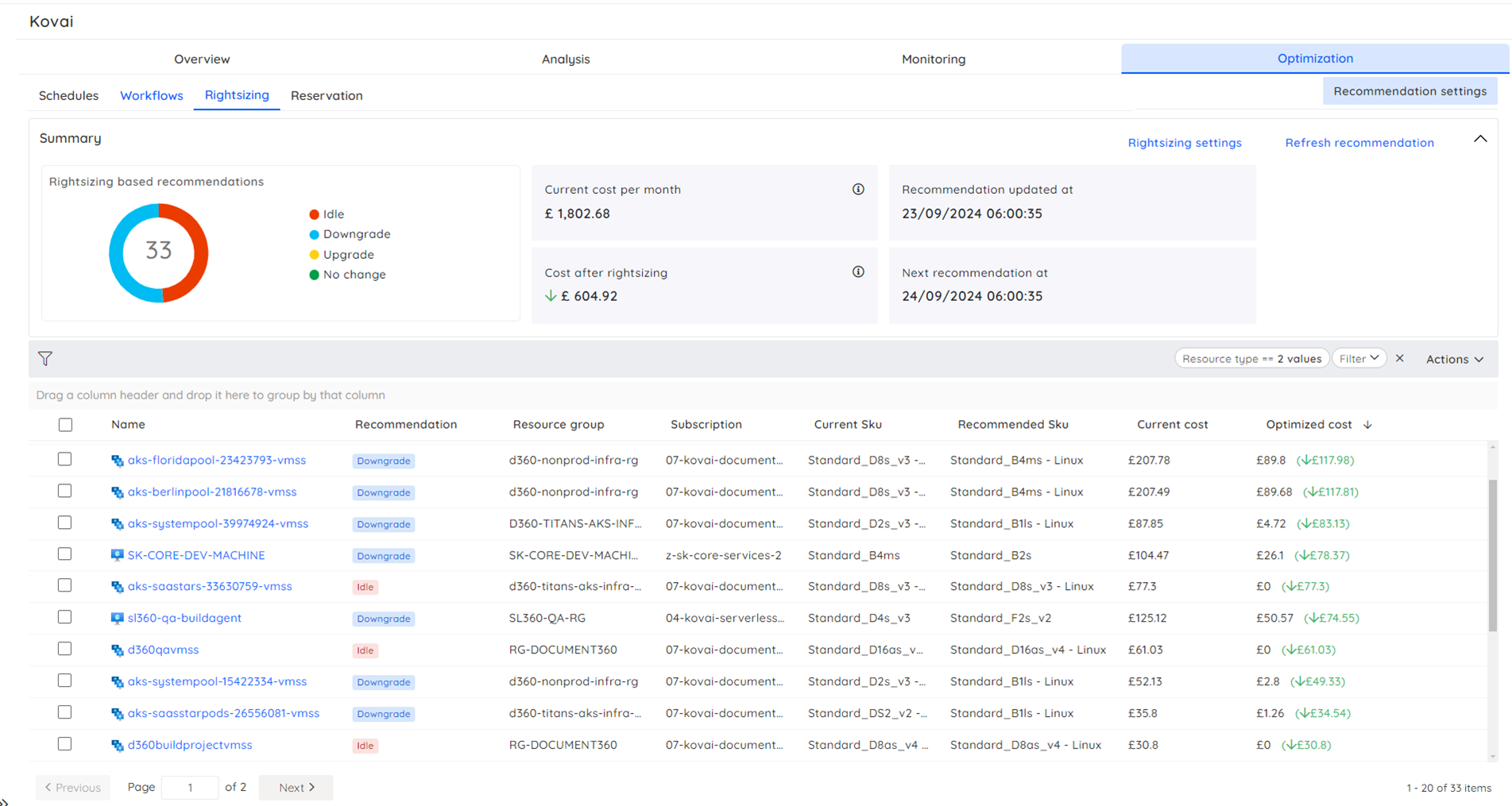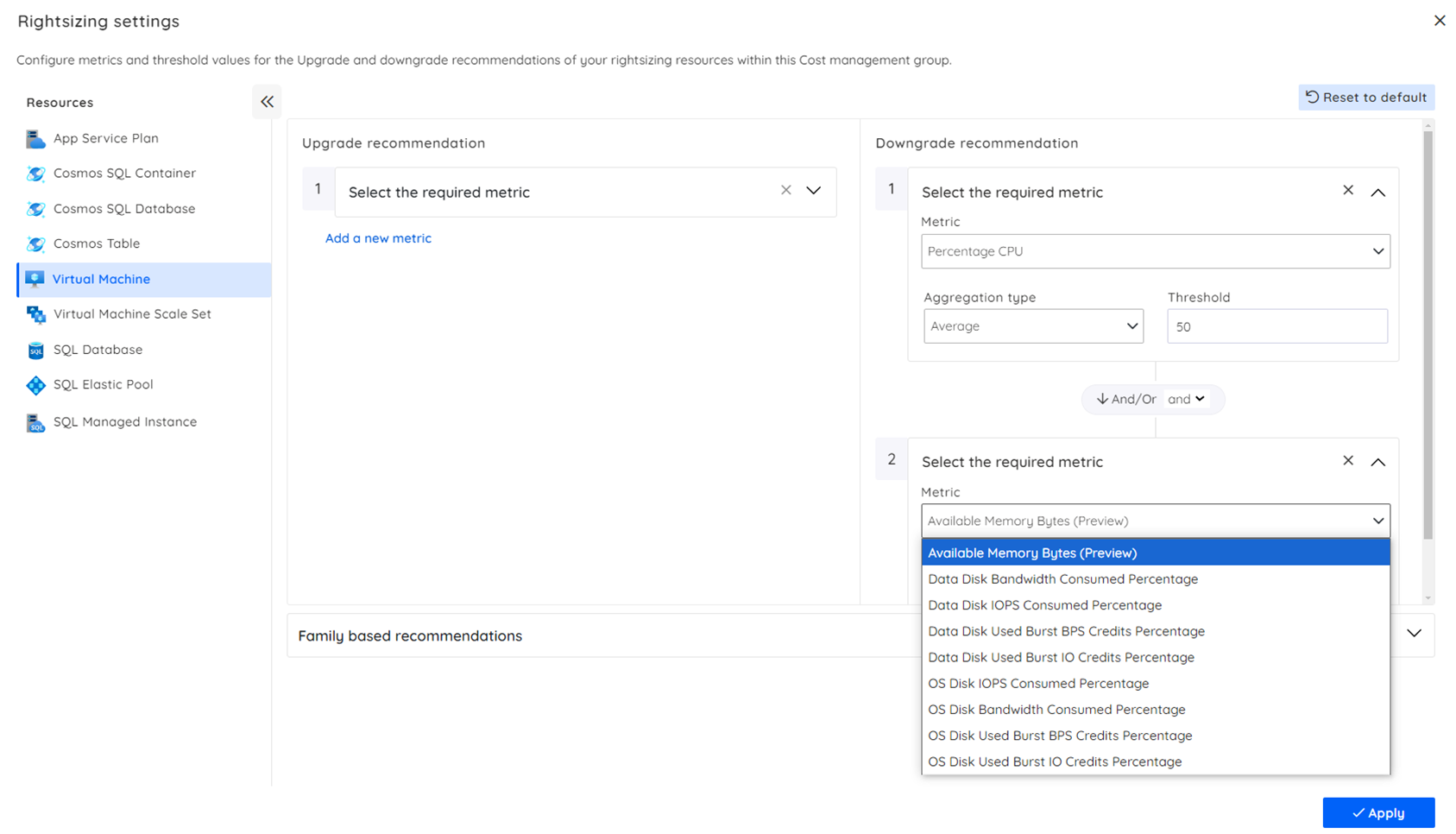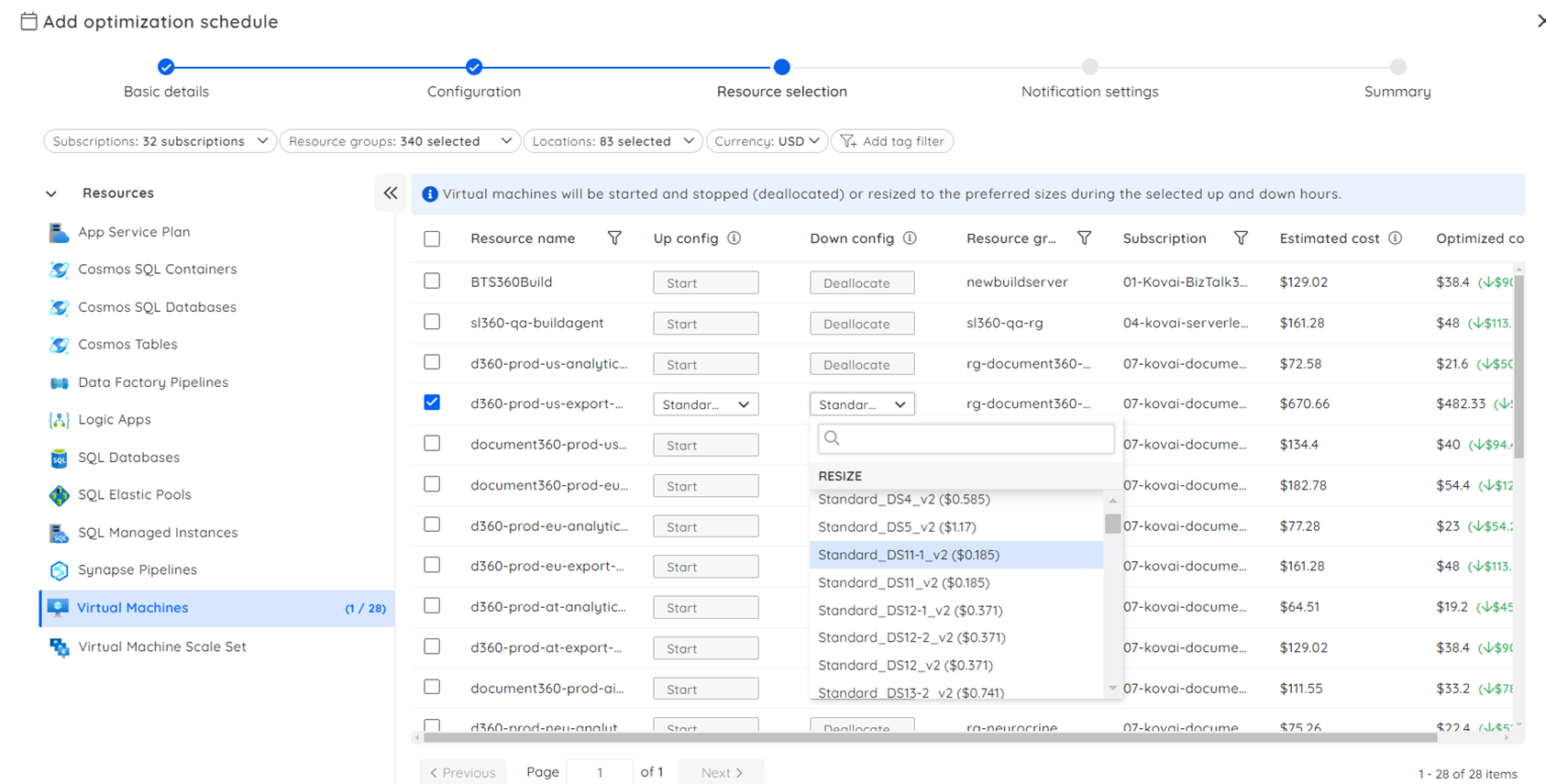Microsoft Azure offers a wide range of Virtual Machines (VMs) to suit various use cases, making it a flexible platform for organizations of all sizes. However, choosing the right VM for your workload can be challenging, especially with Azure’s continuously expanding portfolio. This blog aims to provide detailed Azure VM recommendations to help optimize your cost, performance, and operational efficiency.
Understanding Azure VM Types
Azure categorizes its VMs based on workloads to meet different performance needs. Let’s explore the most common types:
- General Purpose VMs: These VMs provide a balanced ratio of CPU to memory, suitable for testing, development, and small to medium-sized databases. The D-series and B-series VMs are popular choices in this category. General-purpose VMs are ideal for organizations that need an economical yet flexible solution for common workloads.
- Compute-Optimized VMs: The F-series VMs are compute-optimized and designed for applications that require high processing power but minimal memory usage. They are well-suited for batch processing, web servers, and other compute-bound applications.
- Memory-Optimized VMs: For memory-intensive applications such as databases, in-memory analytics, and large caches, the E-series and M-series VMs are a good fit. These VMs offer a higher memory-to-CPU ratio and are tailored for workloads that require significant memory capacity.
- Storage-Optimized VMs: Workloads that require high I/O performance benefit from storage-optimized VMs, such as the Lsv2-series, which provide low latency and high throughput for databases, big data applications, and heavy write operations.
- GPU-Optimized VMs: For AI, machine learning, and other graphic-intensive applications, Azure offers NC, NV, and ND-series VMs. These virtual machines are equipped with powerful GPUs and are designed to handle tasks that require high computational power for graphical processing or training deep learning models.

Factors to Consider When Choosing an Azure VM
When selecting an Azure Virtual Machine (VM), several key factors must be considered to ensure optimal performance and cost efficiency:
- Workload Type: Different VM series are designed for various tasks. General-purpose VMs like the D-series are ideal for balanced workloads, while compute-optimized VMs like the F-series are better for high-performance computing tasks. Memory-intensive applications, such as databases, should use memory-optimized VMs like the E-series.
- VM Size: Ensure the VM size (CPU, memory, and storage) aligns with the workload. Small applications may only need B-series VMs, whereas large-scale processing tasks could require specialized VMs like the GPU-optimized NC-series.
- Cost: Consider cost-saving options like Azure Reserved Instances for long-term workloads, Spot VMs for non-critical tasks, and leveraging Azure Hybrid Benefits to reduce licensing fees.
- Performance: Use Azure’s Proximity Placement Groups to reduce network latency between VMs and managed disks for faster storage performance.
- Scalability: If your workload fluctuates, consider using Azure Autoscale to adjust the number of VMs dynamically based on demand, avoiding over-provisioning.
Read more: Azure VM reservations for Optimizing Cloud Expenses
Evaluating these factors helps in selecting the most suitable VM for your business, balancing performance and cost.
Azure VM Sizing Recommendations
When selecting a VM size, the key factors to consider are the CPU, memory, and storage requirements of your application.
- Small workloads like web apps or small databases might only require small to medium VM instances from the B-series or D-series.
- Medium to large workloads such as enterprise applications or SQL databases may benefit from E-series or M-series instances, which offer more memory.
- Large-scale data processing, or AI training workloads will require GPU-optimized VMs from the NC, NV, or ND series, providing high-performance computing capabilities.
If you anticipate fluctuating workloads, you might consider choosing from the B-series VMs, which are “burstable” and can handle varying performance needs while keeping costs down.
Performance Considerations
Performance optimization is crucial when running resource-heavy applications. Here are key recommendations to ensure optimal performance:
- Choose the Right VM Size: Ensuring that you allocate the appropriate amount of CPU, memory, and storage resources for your workload can dramatically impact performance.
- Leverage Proximity Placement Groups: These groups allow you to co-locate your Azure VMs within the same data center, reducing latency and improving network performance.
- Use Managed Disks: Azure Managed Disks provide higher IOPS (input/output operations per second) compared to traditional disks, ensuring faster data transfer and reducing latency, especially for storage-heavy applications.
Best Practices for Workload Optimization
To make the best use of your Azure VMs, consider these best practices:
- Monitor and Right-size VMs: Azure provides tools like Azure Monitor and Azure Advisor to track VM performance and suggest optimizations, such as scaling up or down based on usage patterns.
- Scaling Solutions: For applications with unpredictable loads, consider using Azure Autoscale to dynamically adjust the number of running VMs based on predefined metrics, such as CPU utilization. This ensures you only pay for the resources you need when you need them.
- Optimize Networking: Take advantage of Azure’s virtual networks to create secure, high-performance communication between your Azure VMs and on-premises resources.
VM Cost Optimization Tips
Cost optimization in Azure is crucial for managing cloud expenses effectively, and Microsoft offers several native tools to help reduce costs without compromising performance. Here are some strategies using Azure’s native tools:
- Azure Hybrid Benefit: This licensing model allows you to use your existing on-premises Windows Server licenses to run VMs on Azure, significantly reducing costs.
- Reserved Instances: Reserved instances allow you to commit to one- or three-year terms, providing substantial savings (up to 72%) compared to pay-as-you-go pricing. Azure RIs are ideal for predictable workloads.
- Azure Spot Instances: Ideal for non-critical workloads, Spot Instances offer unused compute capacity at significantly lower costs. However, they can be evicted at any time if Azure needs the capacity back, making them unsuitable for long-term or mission-critical workloads.
- Azure Advisor: Azure Advisor offers personalized recommendations to optimize resource configurations for performance, security, and cost. It helps by suggesting VM right-sizing, unused resources to eliminate, and lower-cost storage options.
- Azure Cost Management and Billing: This tool helps monitor and analyze cloud spending. It provides insights into resource usage, sets budgets, and generates cost reports. By tracking spending patterns, organizations can identify areas of over-provisioning and unnecessary resource usage.
Challenges faced in the native tool for Azure VM recommendations
While Azure provides robust native tools for VM recommendations, users may face certain challenges in their cost optimization and performance management efforts. Here are some
- Limited Granularity: Azure’s native tools often provide high-level recommendations that may not consider granular details specific to complex workloads. For example, while Azure Advisor might recommend resizing a VM, it may not account for the potential spikes in workload demand, leading to suboptimal performance if the VM is downsized prematurely.
- Spot VM Uncertainty: While Spot VMs offer significant cost savings, they come with the challenge of unpredictability. Since Spot VMs can be evicted at any time, they are not suitable for mission-critical or long-term tasks, limiting their usability. Azure tools provide only basic guidance on the suitability of Spot VMs, leaving many users unsure of when and where to use them effectively.
- Lack of Automation: Although Azure provides insights and recommendations, automating the application of these recommendations is often a manual process. Users need to manually resize or deallocate VMs, which can lead to delays or inconsistencies in implementing cost-saving measures
Turbo360 – A Finops solution built for Azure
Azure, while offering a robust cloud platform, often falls short in providing granular and actionable recommendations for optimizing VM usage. This is where Turbo360’s Azure Cost Analyzer module shines, offering a comprehensive solution tailored specifically for Azure FinOps.
One of the major drawbacks of Azure’s native tools is their limited granularity. They often provide generic recommendations that may not account for the nuances of specific workloads. Turbo360’s Cost Analyzer, on the other hand, offers a deep dive into your Azure environment, providing detailed insights into resource utilization, cost patterns, and performance metrics. This allows you to make informed decisions about resizing, rightsizing, or even eliminating underutilized VMs.
Read more: Azure VM Rightsizing to Boost Performance and Slash Costs

Unlike Azure’s static recommendations, Turbo360’s Cost Analyzer empowers you with flexibility. You can customize the recommendations to align with your specific business needs and priorities. For example, you can set thresholds for resource utilization, define cost targets, and specify preferences for different VM types.

This ensures that the recommendations are tailored to your unique requirements, maximizing cost savings and performance.
Automation is key in growing businesses. While Azure requires manual intervention to implement recommendations, Turbo360 offers automated options to streamline the optimization process. You can configure Turbo360 to automatically resize or deallocate VMs based on predefined rules. This eliminates the need for manual intervention, ensuring that cost-saving measures are implemented promptly and consistently.

Turbo360 is a purpose-built solution for Azure FinOps, unlike Azure, which primarily focuses on development and deployment. This means that Turbo360 is tailored to provide the tools and insights necessary for effective cost management and optimization.
In conclusion, Turbo360’s Cost Analyzer offers a superior alternative to Azure’s native tools for VM recommendations. With its granular insights, flexibility, automation capabilities, and focus on FinOps, Turbo360 empowers you to optimize your Azure environment, reduce costs, and improve performance. By leveraging Turbo360, you can unlock the full potential of your Azure investment and achieve your financial goals and implement strategies to maximize your ROI.
Conclusion
Selecting the right Azure VM requires a detailed understanding of your workload needs and careful consideration of cost, performance, and operational scalability. For general-purpose tasks, the D-series or B-series VMs are excellent starting points. For compute, memory, or GPU-intensive tasks, consider the F, E, M, NC, NV, or ND-series. Additionally, utilizing Azure’s cost-saving options like Hybrid Benefit, Reserved Instances, and Spot VMs can help you manage expenses effectively.
By following these Azure VM recommendations, businesses can ensure they are not only getting the best performance for their applications but also maximizing cost efficiency, while leveraging Azure’s vast cloud infrastructure.
Don’t let overspending on Azure VMs hold you back. With Turbo360 Cost Analyzer, you can optimize your cloud costs, improve performance, and achieve your business goals.









